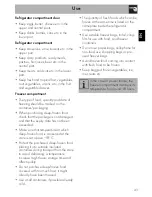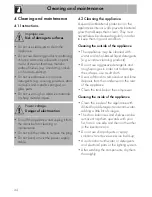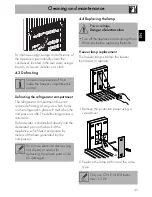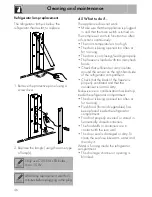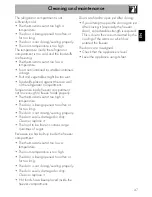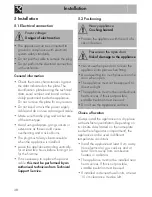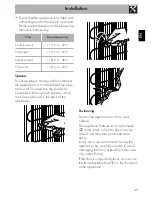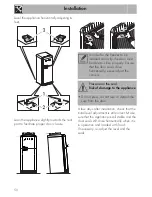
Use
43
EN
Refrigerator compartment door
• Keep eggs, butter, cheese etc. in the
upper and central parts.
• Keep drinks, bottles, cans etc. in the
lower part.
Refrigerator compartment
• Keep conserves, wine, biscuits etc. in the
upper part.
• Keep dairy products, ready meals,
pastries, fruit juices, beer etc. in the
central part.
• Keep meats, cold cuts etc. in the lower
part.
• Keep fresh and tropical fruit, vegetables,
root vegetables, onions, etc. in the fruit
and vegetable drawer.
Freezer compartment
• The type of food, quantity and date of
freezing should be marked on the
container/packaging.
• When purchasing deep-frozen food,
check that the package is not damaged
and that the expiry date has not been
exceeded.
• Make sure that temperature at which
deep-frozen food is conserved at the
store is not above −18°C.
• Protect the purchased deep-frozen food
placing it into suitable insulated
containers during transport from the store
to avoid defrosting; a temperature
increase might lower storage time and
affect quality.
• Do not purchase deep-frozen food
covered with too much frost; it might
already have been thawed.
• Use small containers, if possible already
cold.
• The quantity of fresh foods which can be
frozen at the same time is listed on the
nameplate inside the refrigerator
compartment.
• Use suitable freezer bags, tinfoil, cling-
film for use with food, and freezer
containers.
• Do not use paper bags, cellophane for
non-food use, shopping bags or pre-
used freezer bags.
• Avoid frozen food coming into contact
with fresh food to be frozen.
• Keep bagged frozen vegetables, ice,
ice cream etc.
In the case of power failure, the
freezer compartment maintains its
temperature for around 18 hours.















